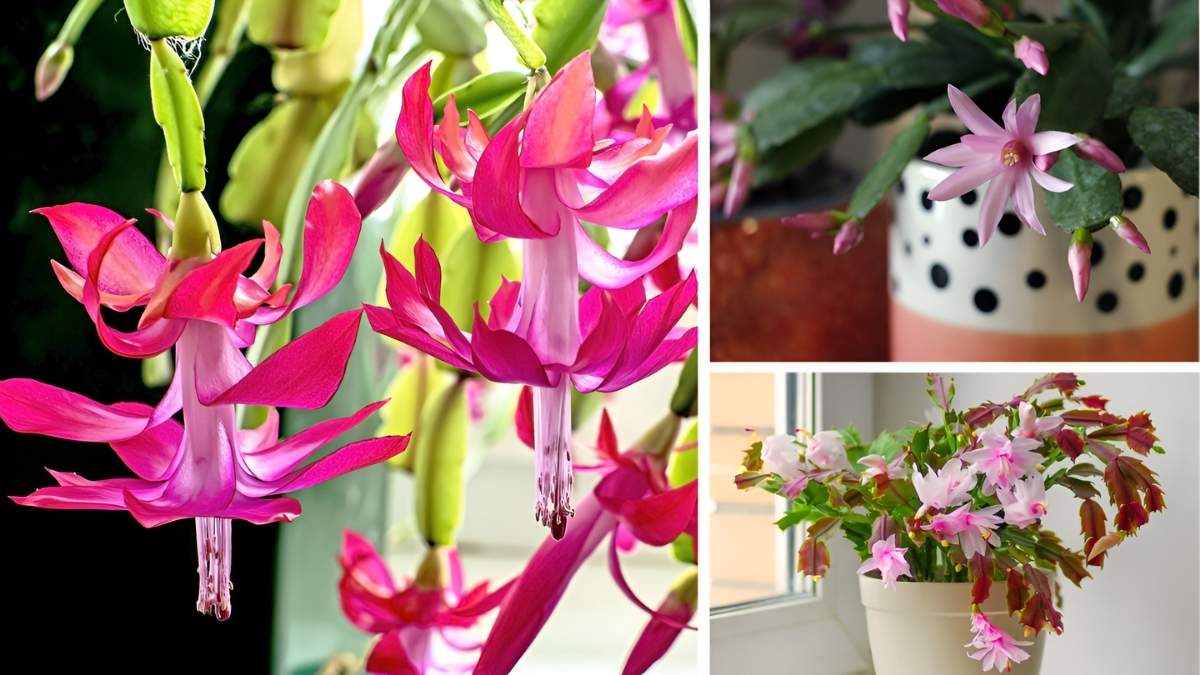Join on WhatsApp
Get the latest updates directly on WhatsApp – motivation, news & more!
The Christmas cactus is a favorite holiday houseplant, known for its beautiful blooms that arrive just in time for the festive season. When cared for properly, it rewards you with vibrant flowers in shades of pink, red, white, or purple. But sometimes, just when those delicate buds start to appear, they drop off unexpectedly.
If your Christmas cactus is losing its buds before they bloom, don’t panic this is a common issue and usually signals a problem with its environment or care routine. The good news is, once you identify the cause, you can take steps to fix it and help your plant thrive again.
Here are the eight most common reasons why your Christmas cactus may be dropping buds and what you can do about it.
Sudden Temperature Changes
Christmas cacti are native to tropical forests, not deserts, so they prefer moderate temperatures. Bud drop often occurs when the plant is exposed to sudden temperature swings. For example, moving it from a cool room to a warm one, placing it near a drafty window, or having it too close to a heater can shock the plant.
Try to keep the cactus in a room with stable temperatures, ideally between 65–75°F (18–24°C) during the day and slightly cooler at night. Avoid placing it near vents, radiators, or cold drafts, and keep it out of direct blasts from heating or cooling systems.
Inconsistent Watering
Both overwatering and underwatering can stress the Christmas cactus and cause it to drop its buds. While it doesn’t like to sit in soggy soil, it also doesn’t appreciate being bone dry for extended periods.
During the budding and blooming stages, it’s especially important to maintain consistent moisture. Water the plant when the top inch of soil feels dry, and let excess water drain out of the pot. Make sure the container has good drainage to prevent root rot, which can lead to bud loss and overall decline.
Lack of Humidity
Christmas cacti originate from humid jungle environments, so dry indoor air can be problematic. When the air is too dry, especially in winter when heaters are running, buds may shrivel and fall off.
Boost the humidity around your plant by placing a tray of water nearby, using a room humidifier, or misting it lightly every few days. Another option is to group it with other houseplants, which helps maintain a more humid microclimate.
Poor Lighting Conditions
Light plays a big role in the health of your Christmas cactus, especially when it’s forming buds. If it’s in a spot that’s too dark or gets direct sunlight all day, the plant can become stressed, leading to bud drop.
These plants prefer bright but indirect light. A north- or east-facing window is ideal. If your only option is a sunny windowsill, try using sheer curtains to filter the light. Too much direct sun can scorch the leaves, while too little can interfere with blooming.
Moving the Plant Too Often
Once a Christmas cactus starts forming buds, it doesn’t like to be moved. Changes in light direction or orientation can cause stress and lead to bud loss. Even rotating the pot to even out growth can sometimes result in dropped buds.
If your plant has already started setting buds, try to leave it in one spot until the blooming phase is over. Avoid transporting it to different rooms or outdoors, and keep it oriented the same way to the light source to avoid confusing the plant.
Nutrient Imbalance
Like all plants, Christmas cacti need the right nutrients to support healthy growth and flowering. If your plant is lacking essential nutrients especially phosphorus, which supports blooming it may not be able to sustain its buds.
Feed your cactus with a balanced, water-soluble fertilizer every 4–6 weeks during the growing season, typically from spring through early fall. When fall arrives, switch to a fertilizer with a higher phosphorus content (such as a 10-30-10 formula) to encourage blooming. Avoid over-fertilizing, as too much nitrogen can promote leaf growth at the expense of flowers.
Stress from Repotting
Repotting can be traumatic for a Christmas cactus, especially if done right before or during its budding phase. Disturbing the roots or changing the soil composition can disrupt the plant’s rhythm, causing it to shed buds.
If you need to repot, do it in late winter or early spring after the blooming period has ended. Use a well-draining soil mix designed for succulents or epiphytic plants. Once repotted, give the plant a few weeks to adjust before expecting new growth or flowers.
Inadequate Pre-Bloom Conditions
To encourage a Christmas cactus to form buds, it needs a period of cool temperatures and darkness in the weeks leading up to bloom. Without this rest period, the plant may either fail to produce buds or drop the ones it does form.
Starting in early fall, aim to provide 12–14 hours of darkness each day for about six weeks. This mimics the plant’s natural bloom trigger. You can do this by moving it to a dark room or covering it with a box or cloth at night. At the same time, keep nighttime temperatures around 50–55°F (10–13°C) to stimulate bud formation. Once buds appear, return the plant to its regular spot and resume normal care.
Final Thoughts
Watching your Christmas cactus drop its buds can be frustrating, especially when you’ve been anticipating its holiday blooms. But in most cases, the problem comes down to environmental stress or inconsistent care—both of which are fixable.
Start by observing your plant’s location, watering habits, and any recent changes. A little extra attention to temperature, humidity, and light can go a long way in helping your cactus retain its buds and bloom beautifully.
With the right care, your Christmas cactus can become a reliable centerpiece year after year, lighting up your space with colorful flowers just when everything else has gone quiet. So don’t give up—your plant just needs a bit of patience and a gentle touch to thrive.




